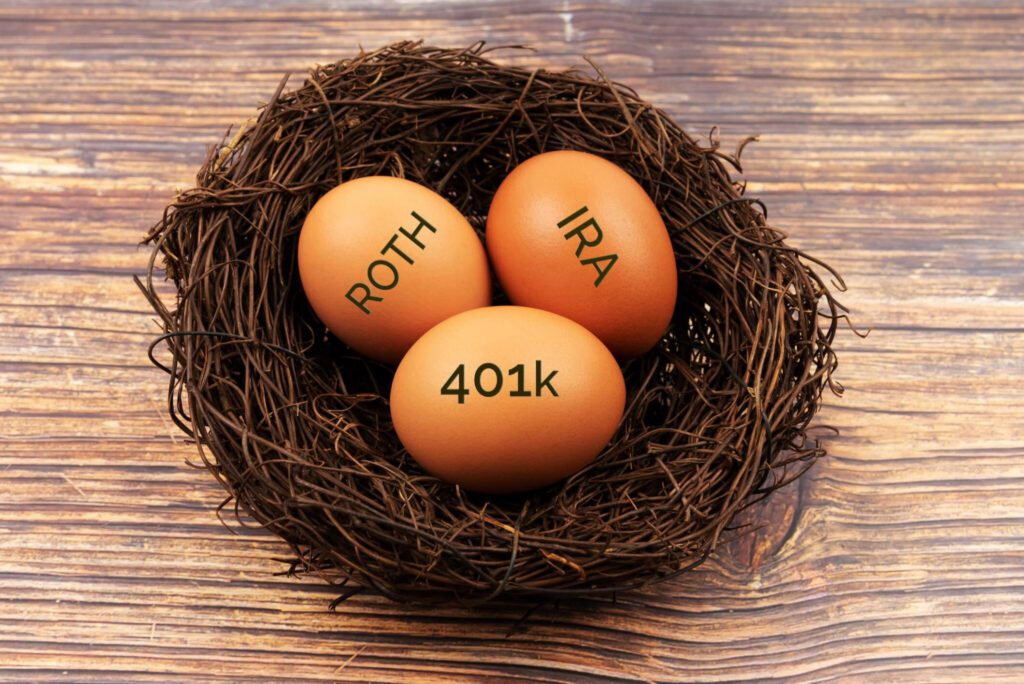Introduction
The elevate 401k stands as a paramount retirement savings instrument for American workers, offering compelling advantages such as upfront tax reductions and the potential for decades of compounded market growth. With the elevate 401k, individuals can allocate pretax or Roth funds from each paycheck towards investments, often accompanied by additional matching contributions from employers. The combination of generous tax incentives, employer-matched funds, sustained market growth over the years, and typically low fees makes the strategic utilization of elevate 401k accounts a key driver for enhancing financial security and improving the quality of life in retirement.
Elevate 401k: Max Out Contributions
The single most important 401k strategy workers at qualifying companies should follow is maximizing their annual contributions up the federal limits. This is crucial both for capitalizing on full employer matching funds as well as socking away as much pretax money as allowed through this sheltered vehicle each year. It is to be noted that some employers offer Roth matching contributions.
Employer match caps commonly fall in the range of 3-6% of income. To qualify, employees must contribute at minimum the same percentage through payroll deductions. If someone earns $60,000 at a company that offers a 4% match, they would need to save $2,400 to receive the full $2,400 employer contribution. This instantly doubles retirement savings contributions. Employees leaving any company match on the table relinquish free money.
Additionally, the annual employee contribution limit for 401ks is $20,500 for those under 50 years old. The cap adjusts periodically and those over 50 receive a catch-up allowance for an extra $6,500 deposit. High-income earners should calculate precisely how much they can set aside each check without exceeding the combined employee-employer contribution ceiling, which taps out of $61,000 for those under 50 and $67,500 for those over 50 for 2023. As incomes rise, allocating raises and bonuses into the 401k provides a painless way to reach the cap through accelerating contributions as a percentage of total pay. Consistently maxing 401k savings each year sets the table for an amplified nest egg at retirement.
Elevate 401k: Choose Investments Wisely
Once consistently maximizing 401k contributions, the next imperative strategic step becomes investing those growing deposits wisely. Participants should assess their personal risk tolerance and time horizon to equity markets to guide allocation decisions. Typically, those with 20+ years until retirement can weigh more heavily toward stocks for their growth potential while balancing against bonds for stability and nearer-term savers shift toward preserved capital.
For hands-off investors, target date funds providing automated rebalancing over time may prove suitable. These set a retirement year and handle gradually dialing down risk as the date approaches. So a 2055 lifecycle option would currently include mostly stocks then progressively shift to more conservative bonds as 2055 nears. The fund company handles allocation adjustments. This allows for some customization according to your risk appetite.
For those comfortable actively picking assets, crafting a personalized mix of low-fee index funds, blue chip stocks, and some bonds allows added personalization. Seek growth from sectors like technology, healthcare, communication services, or funds tracking broader indexes like the S&P 500 but counterbalance with income generation from dividend stocks and the stability of government or corporate bond funds.
Maintain reasonable diversity across sectors, market caps, and domestic and international exposure. Revisit allocations at least quarterly. Every few years, evaluate if objectives are shifting to require tweaks to stock/bond balances and any changes in risk appetite. Keep long-term perspectives when markets hit periodic turbulence.
What is the maximum contribution limit for 401k accounts?
The maximum employee contribution limit for 401k accounts is $20,500 per year for those under the age of 50. For individuals aged 50 and over, there is an additional “catch-up” contribution allowed of $6,500. Therefore, the total maximum employee contribution for 401k accounts is $20,500 annually for those under 50, and $27,000 per year for those 50 and older. When combined with employer matching contributions, the overall 401k contribution limit tops out at $61,000 for those under 50 and $67,500 for those over 50 for 2023. High-income earners seeking to maximize their 401k savings should calculate their contributions precisely each pay period to reach but not exceed the annual limits based on their age.

Elevate 401k: Consolidate & Roll Over
As people change jobs over their careers, they accumulate multiple 401k accounts scattered at various workplaces. Rather than maintaining disparate plans, consolidating funds into a single account simplifies oversight and planning. Investors have a couple of options to consider for consolidation.
First, newer 401k plans may allow transferring or rolling over old company 401k money directly into the current employer-provided account. Check if your plan has provisions for this. It is easiest to then manage just one 401k vehicle.
How should younger investors allocate their 401k portfolio?
Younger investors with long time horizons until retirement should construct growth-oriented 401k portfolios, allocating 80-90% to stocks that can generate substantial returns over decades. This includes stock index funds, blue chips across sectors like technology and healthcare, and small-cap funds. The remaining 10-20% should go to stable assets like bond funds for diversification and downside protection. Regular contributions regardless of market conditions allow for maximizing fund buys at various valuations. As retirement approaches, allocations should gradually shift toward more conservative bonds and cash to preserve capital.
Secondly, rolling over multiple old 401ks into a single IRA account also amalgamates assets while providing wider investment choices devoid of restrictions or limited options from employer plans. This standard IRA rollover option also permits continued tax-deferred growth. Investors can target setting up either a traditional or Roth IRA to receive traditional pretax 401k money or Roth after-tax 401k funds, respectively.
Compare the pros and cons of both consolidation approaches before transferring money from employer plans. Make sure to consider any special provisions you may lose or any extra fees you may have to pay. Weigh flexibility versus costs. Maintaining one centralized 401k or IRA with all your previous retirement plan money streamlines portfolio oversight and long-term planning. Evaluate options every couple of years.
Conclusion
The 401k represents a powerful retirement savings tool for workers to elevate their financial security. Maximizing annual contributions up to federal limits ensures participants capitalize on full employer matching funds while socking away substantial pretax savings each year. Additionally, investing 401k dollars wisely based on risk profiles and time horizons enables greater potential growth through balanced portfolios. Periodically consolidating multiple 401ks from previous employers into a current plan or IRA also streamlines oversight.
Following core strategies of diligent 401k funding, sensible investing, and consolidation sets individuals up for amplified stability in retirement. By fully utilizing employer matches, contributing up to annual caps, crafting customized portfolios, and centralizing accounts, Americans can steadily build more robust nest eggs. While requiring proactivity, 401ks reward commitment with generous tax advantages, disciplined savings, employer contributions, and decades of potential market growth. Committing early and maximizing this sheltered savings vehicle throughout one’s working life will elevate 401k for the retirement years ahead.
When should you rebalance your 401k investment allocations?
401k investors should revisit their investment allocations at least quarterly and conduct periodic rebalancing to realign with target asset class weights. Any time an asset class drifts 5-10 percentage points above or below your targets, it’s time to rebalance. This restores intended risk levels and ensures you sell high and buy low. Major life events like nearing retirement, changing jobs, or shifts in risk tolerance also necessitate reassessing allocations. Additionally, significant market swings where one asset outperforms substantially present opportunities to rebalance back to original targets. Revisiting allocations frequently optimizes returns over the long run.
What are the pros and cons of rolling over an old 401k into a current employer 401k?
Pros of consolidating your old 401k into a current workplace 401k include the simplicity of overseeing just one account, potentially lower fees depending on the plan, and easier management through net paycheck contributions. However, cons are loss of control and flexibility compared to an IRA rollover, employer plan limitations on available investments, and restrictions on withdrawal options. If you leave that employer, you may have to roll it over again. Evaluate if lower costs offset less control before transferring retirement funds into a current workplace 401k versus an IRA rollover
What IRA makes sense for rolling over a Roth 401k account?
If you have a Roth 401k from a previous employer, the best IRA type to roll it over into would be a Roth IRA. This allows you to maintain the tax-free growth benefits of the Roth 401k by consolidating it into another tax-advantaged Roth retirement account. The rollover is tax-free and your Roth IRA continues growing tax-free. Later qualified withdrawals are also tax-free in retirement. This preserves the key advantages of the Roth 401k funds compared to transferring them into a traditional IRA, which would subject withdrawals to income taxes. A Roth IRA rollover keeps your previous Roth 401k savings and future earnings in the Roth tax-free environment as intended.

